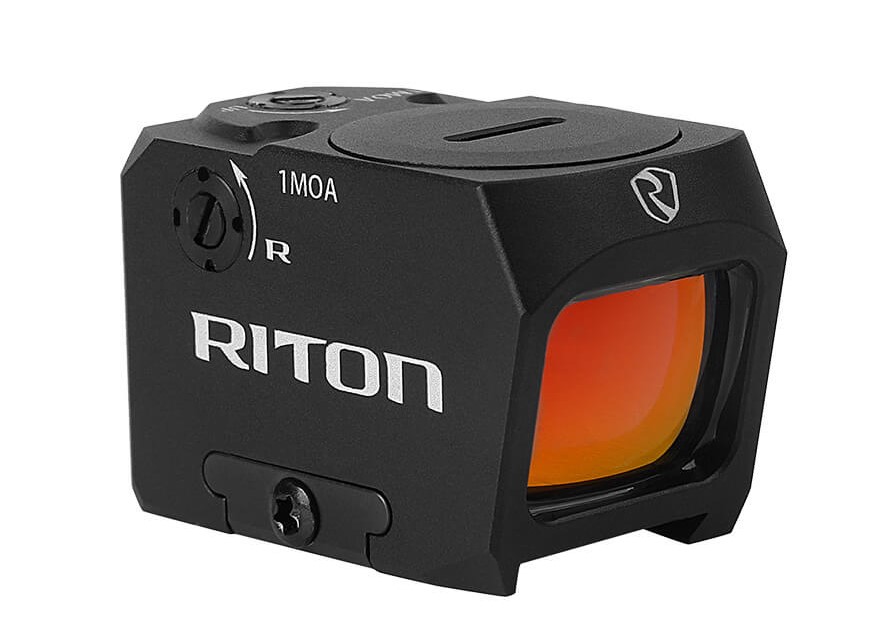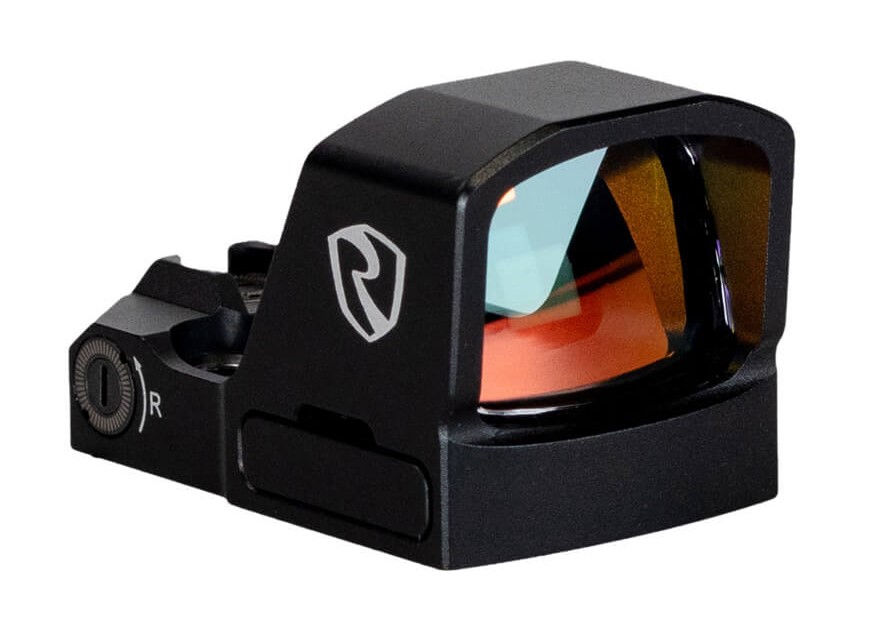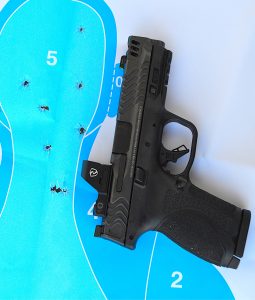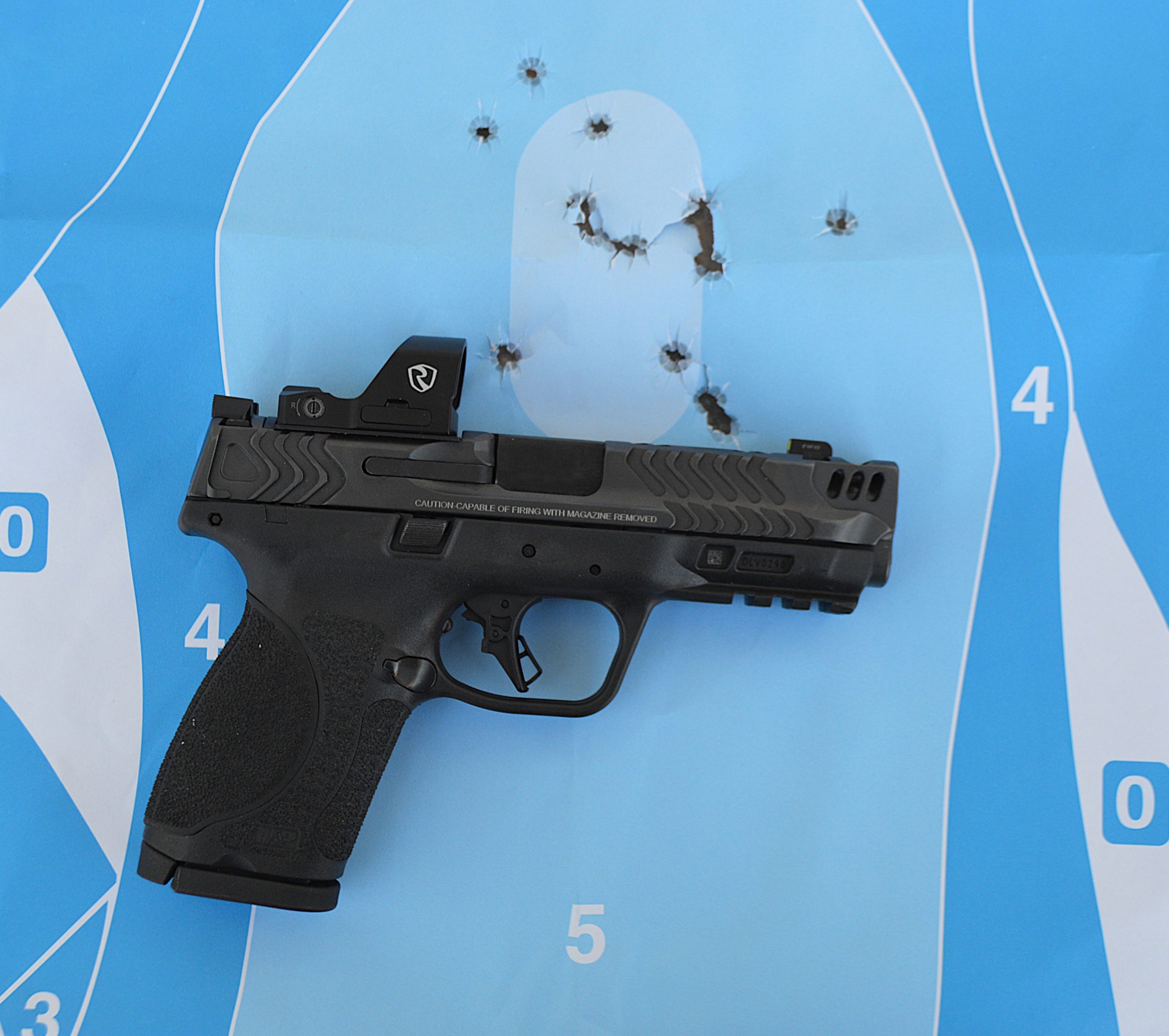
By R.K. Campbell | Contributing Editor
Anytime new technology is introduced there is skepticism and slow acceptance among one crowd and headlong pursuit to adopt the new technology among the other group. I like to use proven gear that works.
In this report I am making comments and sharing experience on both the enclosed emitter sight and the Riton version of that sight.
Some things such as Novak pistol sights and tritium night sights were such obvious improvements I adopted these sights as soon as possible, not that I would be helpless without them.
Some trainers assure their students with platitudes, milk the paper mill, and get the student out quickly. A few have institutional experience enough to provide material for a lifetime of nightmare. They have a serious approach and understand the type of tragedy that may occur without training and testing new gear. The bottom line is most criminals are motivated by profit. But they have a sub script: they will kill you to achieve their aims or escape. Preparation is vital.

The red dot or reflex-type optic is an advance in making fast hits under unfavorable conditions. The red dot underwent its development in competition beginning with sights skirting on unreliable and with poor battery life to the modern Riton with its 40,000 hour battery life.
Speed is proven in competition and in individual testing. The red dot optic demands a transition period from iron sights. Dedication to the goal and solid marksmanship skills should already be baked into the cake. The first travail is finding the dot in the lens as the pistol is presented to the target. This type of skill involves a certain learning curve. The red dot offers the advantage of a single aiming plane. Rather than lining up the rear sight and front sight and concentrating on the target and sight picture and sight alignment you simply place the dot on what you wish to hit.

A pistol doesn’t have the advantages of a rifle in which the shoulder and both hands steady the long gun not to mention adding cheek weld. But with practice you may become very fast at typical personal defense ranges. Nothing man made is perfect and the red dot sight is not. The open emitter suffers from exposure to dirt, dust, mud and inclement weather. This isn’t a huge problem. Most of us carry the pistol concealed and to an extent our garments protect the optic. For open carry the disadvantages are more clear. The hunting rifle or shotgun is more exposed than the concealed carry pistol. The new enclosed emitter red dot sights are designed to offer an enclosed sight that may be more resistant to mishap.
Riton recently introduced the 3 Tactix EED sight. This is an enclosed emitter red dot optic. List price is $349.00 (ritonoptics.com). When ordering anywhere else be certain the site is legit! That is another bucket of worms in today’s world, but you may find a five to ten percent break at some outlets.
Riton offers open emitter sights at $249 to $329 as well. This puts them firmly into the middle of the road in price, not a bad place to be.

Most of the optics are built in the popular RMSc footprint. This sight comes with an adaptor and plate since it mounts differently than open emitter sights. The primary difference between the enclosed emitter dot and the open emitter is that the carrier case is enclosed. All of the action takes place inside the enclosed area. In some ways this is a logical evolution. After all rifle scopes a were once very long tubes with little magnification and there were numerous two piece optics actually deployed by armies. The red dot has followed a similar evolution.
The Riton EED offers an enclosed body. This extra robustness doesn’t come at a severe weight penalty. The Riton EED weighs just half an ounce more than an open emitter design, which isn’t significant. The Riton EED features a 3 MOA dot with ten adjustments. The adjustment offers different dot sizes and intensity for in the home, dim light, bright light, range work and general defense work. The control on the body of the sight makes adjustment fast and certain. The battery compartment is located on the top of the red dot making battery changes easy. Unless I am running an intensive training program I change the battery on my birthday, easy enough to remember and probably not even necessary. There is an automatic off feature activated if the red dot isn’t in motion, and a shake awake feature as well.
A conventional red dot mounts to a pistol by use of two screws, hence the footprint and all are not the same. The EED cannot mount up like that. A separate plate mounts to the optics cut and the sight bolts down securely.

I mounted the red dot and practiced dry fire a few times before heading to the range and zeroing the pistol. With 1 MOA clicks it doesn’t take long to zero. Adjustment is fine enough, however, for either of the red dots tested to work just fine on a rifle or shotgun for personal defense. I had either sighted in with less than ten shots adjusting the sight for a dead on hold at 10 yards. I also check zero at 5 and 25 yards in a personal defense pistol. For chores from an active shooter at longer range to an animal at my knee cap I know where the bullet strikes in relation to the sights.
In my experience a change in zero is more likely caused by the shooter failing to properly torque the screws down than because of a problem with the red dot sight itself. One rule: use Duracell batteries. Those who run the pistol hard and the fellows at the range who see about a million cartridges a year go down range will agree.
My range test while extensive isn’t a torture test but it is a good test of performance. The two sights tested turned in excellent groups. The test was skewed a little as the standard red dot was mounted on a Smith & Wesson Performance Center Carry Comp 9mm. With its easy shooting and crisp trigger of course it out shot the Glock 49 with the mounted EED. The EED, however, is truly fast to a first shot and offers a fast aiming point. For some shooters the outline makes for fast work and the enclosed emitter design must be more durable if you are in the desert or high mountains.
(Go to Ebay or Amazon and order Cat Crap lens cleaner and anti-fogger. It is affordable and works.)
When firing the red dots I adopted a technique taught by Massad Ayoob. When you have trouble finding the dot- and we all do when beginning training- draw to the target and lay the cheek on the firing side bicep. This seems to lead to the red dot. If Captain Ayoob teaches a technique it has been thoroughly worked out and this one worked for me.

I have fired more than one hundred Winchester 9mm cartridges in the Glock and EED combination. I went a little further with the Smith & Wesson Carry Comp as this is my favorite 9mm carry gun by a considerable margin. I have fired more than two hundred ball rounds including twenty +P and twenty-five +P+ in getting the pistol thoroughly sighted and tested. The red dot sight addresses the limitations of the human eye and attempting to focus on the rear sight, front sight, and target. We know to let the rear sight and target blur and keep the front sight sharp but this doesn’t always work out when someone is firing at you. With both eyes open you superimpose the red dot on the target and you are able to see a threat coming from either side as well- bad guys often travel in pairs.
I like the Riton red dots a great deal. They substantially increase my speed and accuracy with either pistol and with either optic mounted. In dry fire I was leaning toward the EED but in the end I am deploying the open emitter on the Smith & Wesson. It just seems to work well for concealed carry. If deploying a long gun the EED would be the choice. Life is good and good shooting is a pleasure.
Ritonoptics.com
3 Tactix EED
MSRP $349.00
Shake awake function/90 MOA adjustment/Two plates included
1.48 ounce weight
3 Tactix MPRD 3
MSRP $329.00
RMSc footprint – Weight .9 ounce



